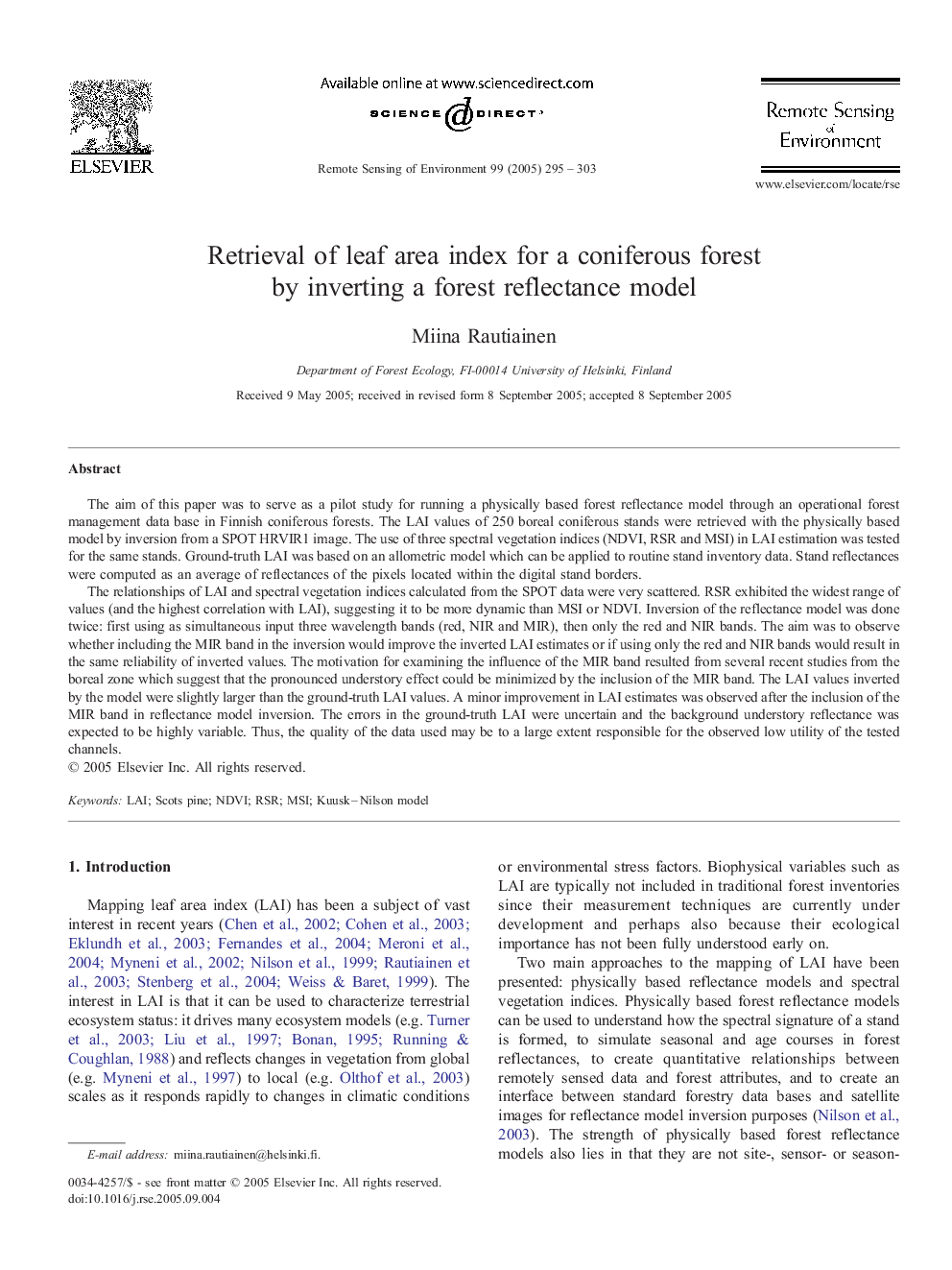| Article ID | Journal | Published Year | Pages | File Type |
|---|---|---|---|---|
| 10114027 | Remote Sensing of Environment | 2005 | 9 Pages |
Abstract
The relationships of LAI and spectral vegetation indices calculated from the SPOT data were very scattered. RSR exhibited the widest range of values (and the highest correlation with LAI), suggesting it to be more dynamic than MSI or NDVI. Inversion of the reflectance model was done twice: first using as simultaneous input three wavelength bands (red, NIR and MIR), then only the red and NIR bands. The aim was to observe whether including the MIR band in the inversion would improve the inverted LAI estimates or if using only the red and NIR bands would result in the same reliability of inverted values. The motivation for examining the influence of the MIR band resulted from several recent studies from the boreal zone which suggest that the pronounced understory effect could be minimized by the inclusion of the MIR band. The LAI values inverted by the model were slightly larger than the ground-truth LAI values. A minor improvement in LAI estimates was observed after the inclusion of the MIR band in reflectance model inversion. The errors in the ground-truth LAI were uncertain and the background understory reflectance was expected to be highly variable. Thus, the quality of the data used may be to a large extent responsible for the observed low utility of the tested channels.
Keywords
Related Topics
Physical Sciences and Engineering
Earth and Planetary Sciences
Computers in Earth Sciences
Authors
Miina Rautiainen,
